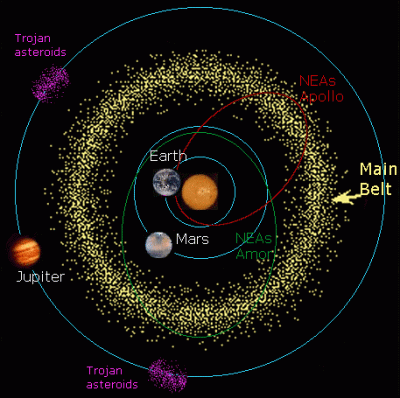What is the Jupiter?

Jupiter is the fifth planet from the Sun and the largest planet in the Solar System. It is a gas giant with thick bands of brown, yellow, and white clouds. Its atmosphere is made up of hydrogen and helium gas, just like our Sun, and if it was much more massive, it could become a star! Jupiter took shape when the rest of the solar system formed about 4.5 billion years ago, when gravity pulled swirling gas and dust in to become this gas giant. Jupiter took most of the mass left over after the formation of the Sun, ending up with more than twice the combined material of the other bodies in the solar system. In fact, Jupiter has the same ingredients as a star, but it did not grow massive enough to ignite. As a gas giant, Jupiter doesn’t have a true surface. The planet is mostly swirling gases and liquids. While a spacecraft would have nowhere to land on Jupiter, it wouldn’t be able to fly through unscathed either. The extreme pressures and temperatures deep inside the planet crush, melt and vaporize spacecraft trying to fly into the planet.
Giant planet
Jupiter is the king of solar system. It is an amazing 143,000 km (89,000 miles) wide. Jupiter is so large that all of the other planets could fit inside it! The planet is mostly made of hydrogen and helium surrounding a dense core of rocks and ice, with most of its bulk likely made up of liquid metallic hydrogen, which creates a huge magnetic field. Jupiter is visible with the naked eye and was known by the ancients. Its atmosphere consists mostly of hydrogen, helium, ammonia and methane.
Juno Mission
NASA’s Juno spacecraft is helping scientists to understand how Jupiter formed. It is orbiting closer to the gas giant than any spacecraft has before.
Juno's mission is to measure Jupiter's composition, gravity field, magnetic field, and polar magnetosphere. It will also search for clues about how the planet formed, including whether it has a rocky core, the amount of water present within the deep atmosphere, mass distribution, and its deep winds, which can reach speeds up to 618 kilometers per hour (384 mph).
Juno is the second spacecraft to orbit Jupiter, after the nuclear powered Galileoorbiter, which orbited from 1995 to 2003. Unlike all earlier spacecraft sent to the outer planets, Juno is powered by solar arrays, commonly used by satellites orbiting Earth and working in the inner Solar System, whereas radioisotope thermoelectric generators are commonly used for missions to the outer Solar System and beyond. For Juno, however, the three largest solar array wings ever deployed on a planetary probe play an integral role in stabilizing the spacecraft as well as generating power.
Beneath the clouds
Any spacecrafts that passed through Jupiter’s clouds would be crushed and melted by the huge pressure. Scientists believe that beneath the clouds there is a giant ocean made of liquid metal.
Jupiter’s rings
Jupiter has three thin rings, called the Jovian Rings. They are mostly made of dust and can only be seen when viewed from behind Jupiter, when they are lit up by the Sun. The main ring is flattened. It is about 20 miles (30 km) thick and more than 4,000 miles (6,400 km) wide.
The inner cloud-like ring, called the halo, is about 12,000 miles (20,000 km) thick. The halo is caused by electromagnetic forces that push grains away from the plane of the main ring. This structure extends halfway from the main ring down to the planet's cloud tops and expands. Both the main ring and halo are composed of small, dark particles of dust.
The third ring, known as the gossamer ring because of its transparency, is actually three rings of microscopic debris from three of Jupiter's moons, Amalthea, Thebe and Adrastea. It is probably made up of dust particles less than 10 microns in diameter, about the same size of the particles found in cigarette smoke, and extends to an outer edge of about 80,000 miles (129,000 km) from the center of the planet and inward to about 18,600 miles (30,000 km).
Great Red Spot
One of the Jupiter’s most famous features is the Great Red Spot. It is a huge storm, more than three times the size of Earth, that has been raging for hundreds of years!
The red colour of the Great Red Spot is thought to be caused by organic molecules, red phosphorous or other elements that come from inside Jupiter. Some theories propose that the colour is caused by reactions between these chemicals in Jupiter’s atmosphere, or by lightning striking the molecules. The colour is not always the same, either: sometimes it is dark red, while at other times it is a pale pink colour, or even white! Perhaps Jupiter’s Great Red Spot is not so red after all!
Picture Credit : Google













